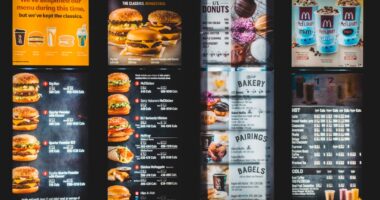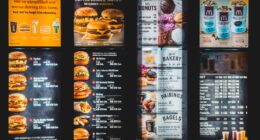In today’s digital age, marketing for musicians has become as crucial as producing the music itself. An artist’s ability to stand out amidst the digital chaos significantly influences their path to success. With the evolution of streaming platforms, social media, and digital promotion techniques, understanding the fundamental principles of marketing music is indispensable. This guide is designed to navigate through the complexities of marketing musicians, focusing on strategies that leverage technological advancements to enhance visibility and engagement.
This comprehensive guide will cover the essential elements of marketing for musicians, starting with the creation of remarkable music as the cornerstone of any successful marketing strategy. It will then delve into establishing a strong digital presence, mastering the art of content creation optimized for platforms including YouTube and Spotify playlists, and effectively utilizing email marketing. Insights into leveraging streaming platforms, engaging with record labels, merchandising, and the importance of physical promotions will be discussed. Additionally, strategies for networking and collaborations will be explored, rounding out a holistic approach to marketing in the music industry.
The Essential Cornerstone: Creating Remarkable Music
The Role of Quality in Music Marketing
In the fiercely competitive music industry, the quality of music serves as the foundation for successful marketing. It is imperative for musicians to produce great songs, characterized not just by technical excellence but also by a unique style and presence that sets them apart. This high level of product is essential to rise above the cultural noise floor, attracting record labels and gaining financial support. The process involves meticulous songwriting, which should be gauged by both contemporary market trends and the timeless appeal of influential music from the past. Musicians must invest time in rewriting and editing their work, ensuring they are not swayed merely by friends’ opinions or initial excitement over a track.
Understanding Your Unique Sound and Audience
Developing a signature sound is crucial for artists aiming to establish a distinctive identity in the music world. This unique sound should resonate as an authentic expression of the artist’s personal experiences and musical preferences. It is about uncovering an inherent musical style that feels genuine and engaging to the artist, which can then be consistently applied across various projects. Musicians are encouraged to experiment with different genres, instruments, and production techniques to discover elements that can be woven into their unique sound. Additionally, understanding the audience’s preferences is vital; it enables artists to tailor their music in a way that connects emotionally and culturally with their listeners. This connection is not only about reflecting the artist’s identity but also about aligning with the audience’s expectations and emotional landscape.
By focusing on these aspects, musicians can craft a sound that not only stands out due to its uniqueness but also creates a strong resonance with their target audience, paving the way for deeper engagement and loyalty.
Building a Strong Digital Presence
The Importance of a Professional Website
In the realm of music marketing, a professional website acts as the central hub for all promotional activities. It’s essential for musicians to establish a website that not only looks good but also functions effectively, providing fans with a direct and reliable source of information. This includes updates on new music, upcoming events, and merchandise. A well-designed website enhances the artist’s professional image and is crucial for attracting promoters, booking agents, and press attention.
- Professional Appearance: A website should reflect the musician’s brand aesthetically and professionally. Using responsive templates ensures the site looks great on all devices, enhancing the user experience.
- Direct Fan Engagement: Through integrated sign-up forms, artists can connect directly with their audience via email, bypassing the noise of social media.
- Merchandising: Websites allow artists to sell merchandise directly to fans without intermediaries, providing a significant revenue stream.
- Analytics: Utilizing website analytics helps musicians understand their audience better, enabling targeted marketing efforts.
Leveraging Social Media Platforms Effectively
Social media is a powerful tool for musicians to grow their fanbase, engage with listeners, and promote their music. Each platform offers unique benefits and should be used strategically to reach the intended audience.
Choosing the Right Platforms
Musicians must select social media platforms that best align with their music genre and target audience. For instance, Instagram and TikTok are ideal for visual and short-form content, while YouTube is perfect for long-form music videos and performances.
Engaging Content Creation
Creating compelling content that resonates with fans is crucial. This includes behind-the-scenes footage, live performances, and interactive posts like Q&A sessions. Musicians should maintain a consistent posting schedule to keep their audience engaged.
Interactive Engagement
Building a relationship with fans is vital. Musicians should actively engage with their followers by responding to comments and messages, hosting live streams, and sharing user-generated content. This fosters a loyal community around the musician’s brand.
Utilizing Analytics
To optimize social media strategies, musicians need to regularly analyze their performance metrics. This data helps in understanding what content works best and in making informed decisions to enhance their digital presence.
By focusing on these strategies, musicians can effectively build and maintain a strong digital presence, essential for success in the competitive music industry.
Mastering the Art of Content Creation
In the dynamic world of music marketing, creating content that resonates with your audience is paramount. Artists are no longer just musicians; they are content creators who wield the power of video and behind-the-scenes content to forge deeper connections with their fans. This evolution requires a strategic approach to content creation, ensuring that every piece of content, whether it’s a vlog, a behind-the-scenes clip, or a music video, contributes to building a stronger, more engaging brand presence.
Engaging your audience with behind-the-scenes content
Behind-the-scenes (BTS) content offers a unique window into the life of musicians, providing fans with a glimpse of the hard work, creativity, and personality that goes into their music. This type of content can range from the day-to-day routine of artists, including their morning rituals and studio sessions, to the more intricate details of their music production process. By sharing these candid moments, musicians can humanize their brand, making their audience feel like they are part of a close-knit community. This level of engagement is crucial for building a loyal fan base that is invested in the artist’s journey.
- Showcase Your Creative Process: Share clips of songwriting sessions, beat production, or music arrangement to give fans insight into how their favorite tracks are made.
- Share Personal Moments: Let fans into your world by sharing personal anecdotes, hobbies, or even challenges you face. This builds a relatable image that fans can connect with.
- Involve Your Audience: Engage fans by asking for their opinions on new tracks, artwork, or merch designs. This inclusion makes them feel valued and deepens their connection to your music.
Utilizing video for deeper connections
Video content stands at the forefront of digital marketing strategies for musicians. Platforms like YouTube and social media channels have become primary avenues for music discovery, making it essential for artists to produce compelling video content that stands out. From music videos that tell a story to casual vlogs that share personal experiences, video content allows musicians to express themselves creatively while reaching a wider audience.
- Music Videos: Create visually appealing music videos that complement your songs and help narrate their story. This not only enhances the listening experience but also attracts new listeners who are drawn in by the compelling visuals.
- Vlogging: If writing isn’t your forte, consider vlogging. Share your experiences, thoughts, and daily life through video blogs. This format is particularly effective for connecting with fans on a more personal level.
- Quality Over Perfection: While professional-looking videos are beneficial, the authenticity of raw, less polished videos filmed on a smartphone can also be engaging. The key is consistency and genuine content that reflects your artistic identity.
| Content Type | Description | Platform Recommendations |
|---|---|---|
| Music Videos | High-quality, story-driven videos that complement your music. | YouTube, Vimeo |
| Vlogs | Casual, diary-style videos that offer a glimpse into your life as a musician. | YouTube, Instagram |
| Behind-the-Scenes | Content showcasing the making of music, personal anecdotes, and the creative process. | Instagram, Facebook |
| Live Performances | Videos of live shows or intimate home performances to keep fans engaged with your music. | YouTube, Instagram Live |
In conclusion, mastering the art of content creation is about more than just promoting music; it’s about building a narrative that fans can follow and engage with. By utilizing behind-the-scenes content and leveraging the power of video, musicians can create a multifaceted digital presence that captivates and retains the interest of their audience.
Strategically Utilizing Email Marketing
Email marketing remains a cornerstone in the arsenal of marketing for musicians, offering a direct and personalized way to engage with fans. Unlike the ever-changing algorithms of social media platforms, email delivers content straight to the inboxes of fans, ensuring that musicians can connect with their audience without interference. This section delves into how musicians can grow a dedicated fan base through newsletters and offer exclusive content to email subscribers, enhancing their marketing strategy and fostering a closer relationship with their audience.
Growing a Dedicated Fan Base through Newsletters
- Building Your Email List: The starting point for effective email marketing is to build a robust email list. Musicians can leverage their website by integrating an email sign-up form, offering lead magnets such as exclusive recordings or behind-the-scenes content in exchange for email subscriptions. This approach not only grows the email list but also ensures that those who sign up are genuinely interested in the artist’s work.
- Engaging Content: Newsletters give musicians the freedom to share a wide array of content with their fans. From tour dates and new releases to personal stories and behind-the-scenes footage, newsletters can be a rich source of engaging content. Musicians can use this platform to make their audience feel like VIPs, sharing exclusive content that is not available elsewhere.
- Consistent Communication: Regular and consistent communication with fans is vital. Whether it’s a monthly or bi-weekly newsletter, keeping fans updated creates anticipation and keeps the musician top of mind. Engaging content, coupled with a consistent schedule, can turn casual listeners into dedicated fans.
- Personalization and Segmentation: Personalizing emails and segmenting the email list based on fan interests can significantly increase engagement. Musicians can send targeted emails to fans who prefer certain types of music or content, making the communication more relevant and effective.
Offering Exclusive Content to Email Subscribers
| Exclusive Offerings | Description |
|---|---|
| Early Access | Provide early access to new tracks, music videos, or merchandise, making subscribers feel special and valued. |
| Private Links | Use private links to share new music or videos, driving traffic to platforms like YouTube while keeping the content exclusive. |
| Merchandise Discounts | Offer discounts on merchandise or early access to ticket sales, directly linking email marketing with revenue generation. |
| Behind-the-Scenes | Share personal stories, studio updates, or the creative process behind songs, offering a deeper insight into the musician’s world. |
| Interactive Content | Engage subscribers by inviting them to participate in polls, share their stories, or provide feedback on upcoming projects. |
By strategically utilizing email marketing, musicians can bypass the unpredictability of social media algorithms, directly engaging with their fans in a meaningful way. Offering exclusive content and maintaining regular, personalized communication through newsletters can strengthen the bond between artists and their audience, laying the foundation for a loyal fan base that supports the musician’s career in the long term.
Leveraging Streaming Platforms and Playlists
Maximizing Exposure through Spotify and Apple Music
The digital music landscape is dominated by platforms like Spotify and Apple Music, where playlists play a pivotal role in music discovery and artist promotion. To effectively leverage these platforms, artists need to understand the different types of playlists available and the strategies to get their music featured.
- Understanding Playlist Types: There are three main types of playlists on Spotify and Apple Music:
- Editorial Playlists: Curated by music experts at the platforms, these playlists are a blend of trending and established tracks and can significantly boost visibility and streams.
- Algorithmic Playlists: Generated based on user listening habits, these playlists offer personalized music recommendations, making them a crucial target for artists looking to reach new fans.
- User-Generated Playlists: Created by listeners, these can vary widely in reach but provide a grassroots level of promotion.
- Research and Targeting: Artists should start by researching playlists that fit their music style and audience. This involves listening to existing playlists for insights into the type of music featured and understanding the curator’s preferences.
- Optimize Your Tracks: Ensuring your music is professionally produced and providing complete metadata can increase your chances of being featured. High-quality, appealing artwork and a strong online presence are also critical.
- Direct Submission Tools: Utilize tools provided by Spotify and Apple Music to submit tracks directly for playlist consideration. Keeping a professional and updated artist profile is essential to enhance visibility to playlist curators.
Getting Featured on Playlists
Securing a spot on a popular playlist can be transformative for musicians. It requires a mix of preparation, research, and strategic outreach.
- Building a Playlist Strategy: Start by identifying potential playlists and understanding their impact on your music genre. Focus on playlists with a substantial following and those whose listeners might appreciate your music.
- Engage with Playlist Curators: Crafting a compelling pitch to playlist curators is crucial. Highlight what makes your music a good fit for their playlist and include any relevant information about your track that could capture their interest.
- Leverage Analytics: Monitor the performance of your tracks on different playlists to understand what works best for your music. This data can help refine future submissions and tailor your approach to align with listener preferences.
- Encourage Fan-Created Playlists: Engage with your audience and encourage them to include your tracks in their playlists. This not only enhances your visibility but also helps in cultivating a dedicated fanbase.
| Playlist Type | Description | Key Strategy |
|---|---|---|
| Editorial Playlists | Curated by platform experts, feature a mix of genres and artists. | Pitch directly to platform curators and maintain a high-quality profile. |
| Algorithmic Playlists | Generated based on user behavior and preferences. | Optimize music metadata and engage actively with your existing audience to influence algorithms. |
| User-Generated Playlists | Created by users, can vary in reach and influence. | Encourage fans to create and share playlists; collaborate with influencers. |
By strategically utilizing these platforms and understanding the nuances of different playlist types, artists can significantly enhance their music’s reach and engagement, paving the way for broader recognition and success in the competitive music industry.
Merchandising and Physical Promotions
Creating and Selling Merchandise
Merchandising serves as a vital income stream and branding tool for musicians. The process begins with understanding the band’s narrative, which influences the design and messaging of the merchandise. High-quality, durable materials are essential as they reflect the musician’s commitment to their fans and enhance the longevity of the products. Musicians should consider eco-friendly options to appeal to environmentally conscious fans.
- Brand Identification: Before creating merchandise, musicians must define their band’s narrative. This story guides the design and messaging of the merchandise, ensuring it resonates with fans.
- Audience-Centric Design: Musicians can use surveys or polls to understand what their fans would love to wear or use, tailoring designs to specific fan segments.
- Quality and Sustainability: Opting for durable materials and considering eco-friendly options can significantly enhance the appeal of merchandise.
- Diverse Merchandise Options: Beyond traditional apparel like t-shirts and hoodies, musicians should think about everyday items such as coffee mugs, hats, and phone cases that fans can use in their daily lives.
Using Merch as a Promotional Tool
Merchandise not only serves as a revenue stream but also as a powerful promotional tool, extending the artist’s brand beyond music. By integrating merchandise with promotional strategies, musicians can enhance their visibility and engage more deeply with their fans.
- Live Events: Selling merchandise at live shows offers fans a tangible connection to the artist and can significantly boost sales.
- Exclusive and Limited Edition Items: Offering exclusive or limited edition merchandise can create urgency and boost sales. Items like vinyl records, special edition t-shirts, or unique accessories like enamel pins are particularly effective.
- Social Media and Online Platforms: Utilizing social media for promoting merchandise allows artists to reach a wider audience. Engaging fans with content related to merchandise, such as special offers or behind-the-scenes looks at the creation process, can drive online sales.
- Fan Involvement: Encouraging fans to share their merchandise on social media can increase visibility and attract new fans. Using specific hashtags can help track the reach and impact of these promotions.
| Strategy | Description |
|---|---|
| Live Event Sales | Capitalize on the captive audience at concerts to sell merchandise directly. |
| Exclusive Offers | Create limited edition or exclusive items that are only available for a short period of time. |
| Social Media Promotion | Use platforms like Instagram and Facebook to showcase merchandise and engage with fans. |
| Fan-Generated Content | Encourage fans to post pictures with their merchandise, using specific hashtags. |
By strategically using merchandise as a promotional tool, musicians can not only increase their revenue but also strengthen their connection with fans, turning them into active promoters of the brand.
Networking and Collaborations
Expanding Reach Through Strategic Partnerships
Networking is essential in the music industry, providing a platform for artists to connect with a wide array of professionals, from producers to songwriters and engineers. Through strategic partnerships, musicians can tap into new resources, access larger platforms, and offer unique fan experiences. Such collaborations are not only about sharing creative ideas but also about amplifying one’s visibility in the industry.
- Building Professional Relationships: Collaborating with industry professionals opens doors to new opportunities. By working together, musicians can gain insights and learn from the experiences of their peers, which is invaluable for personal and professional growth.
- Access to Larger Platforms: Partnerships with established brands or influencers can provide musicians with access to broader audiences. These collaborations leverage the marketing power and audience base of brands, helping artists reach new listeners.
- Enhanced Fan Experiences: By teaming up with other creatives, musicians can create unique content and experiences for their fans, from exclusive tracks to behind-the-scenes content, adding value to the fan experience.
Collaborating with Other Artists and Influencers
Collaborating with other artists and influencers can significantly enhance a musician’s creative output and reach. These partnerships allow artists to tap into each other’s fanbases, introducing their music to a wider and more diverse audience.
- Creative Synergy: Working with other artists can lead to innovative musical ideas and styles, helping musicians to explore new creative territories. This synergy can result in unique sounds that set artists apart from the competition.
- Social Media Takeovers: Partnering with influencers for social media takeovers is an effective strategy for reaching new audiences. Influencers can introduce an artist’s music to their followers, increasing visibility and engagement.
- Joint Performances and Releases: Collaborative tracks or performances can generate buzz and attract attention from both artists’ fanbases. These activities can be promoted across various platforms, maximizing the exposure of the artists involved.
| Collaboration Type | Benefits | Examples |
|---|---|---|
| Professional Partnerships | Access to industry expertise and resources | Collaborating with music producers or sound engineers |
| Brand Collaborations | Increased visibility through brand’s audience | Partnering with fashion brands for merchandise |
| Artist Collaborations | Creative synergy and shared fanbases | Joint singles or albums with other musicians |
| Influencer Collaborations | Enhanced reach and engagement on social media | Social media takeovers, shared content creation |
By strategically utilizing networking and collaborations, musicians can not only enhance their creative capabilities but also significantly boost their career prospects and audience reach. These partnerships foster a supportive community that can propel an artist’s work into new realms of popularity and success.
Conclusion
Throughout this guide, we’ve delved into the multifaceted world of marketing for musicians, exploring routes from creating remarkable music and establishing a robust digital presence to mastering content creation and utilizing email marketing effectively. Each section has offered key insights into leveraging the latest technologies and platforms to ensure an artist’s visibility and engagement remain at their peak. The comprehensive discussions aimed to equip musicians with the necessary tools and strategies to navigate the complex landscape of today’s music industry, underscoring the significance of quality, unique sound, strategic digital marketing, and the power of networking and collaborations.
As we conclude, it’s essential to remember that the journey of marketing music is continuous and evolving. The dedication to creating quality music remains paramount, serving as the foundation upon which all marketing efforts stand. By embracing the strategies highlighted, musicians can enhance their connection with their audience, extend their reach to potential fans, and solidify their position in the competitive music industry. The impetus now lies on artists to apply these insights, innovate, and adapt to the ever-changing digital landscape, paving their way toward achieving long-lasting success and resonance with their audience.
FAQs
1. What are the key components of music marketing?
The four main components of music marketing are Product, Price, Place, and Promotion. These are adapted from the traditional marketing mix to fit the unique needs and aspects of the music industry.
2. How can a musician effectively market their work?
To effectively market music, a musician should focus on several strategies: building a strong social media presence to grow a fanbase, performing live to increase visibility, creating visually appealing content, developing a press kit, networking with industry professionals, maintaining a fan newsletter, and utilizing targeted advertising.
3. What trends are shaping music marketing in 2024?
In 2024, key music marketing trends include the increased production and consumption of regional, non-English music, and the enhanced personalization of music experiences through artificial intelligence tools.
4. How can someone start a career in music industry marketing?
Starting a career in music industry marketing typically involves securing an internship in the marketing department of a record company. It’s beneficial to regularly check for internship opportunities through record labels or educational institutions. For those already employed at a record company, volunteering in the marketing department can provide valuable experience and insights into the industry.









5 comments
Hi, this is a comment.
To get started with moderating, editing, and deleting comments, please visit the Comments screen in the dashboard.
Commenter avatars come from Gravatar.
Выбор №1 для покупки продукции Microsoft, которому можно доверять.
услуги управления кибербезопасностью https://best-lip-filler.com/ .
Advantages of double glazed windows in Melbourne
window and door store window and door store .
Express pumping on Lineage 2 servers
L2 top L2 top .
Why are domestic animals so important, why people love pets.
How to choose a pet, advantages of different pet breeds.secrets of pet care, how to create a pet’s diet.Interesting facts about pets, why people adore pets.effective methods of pet training, how to train a cat to walk on a leash.
domestic animals meaning https://www.petstorepetsupply.com/index.php/2024/06/22/creating-a-wildlife-friendly-garden/ .